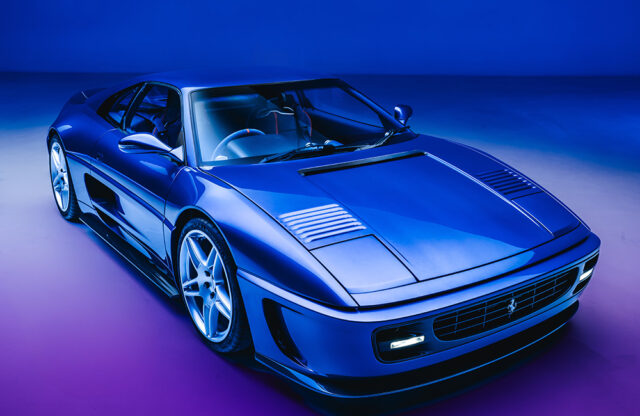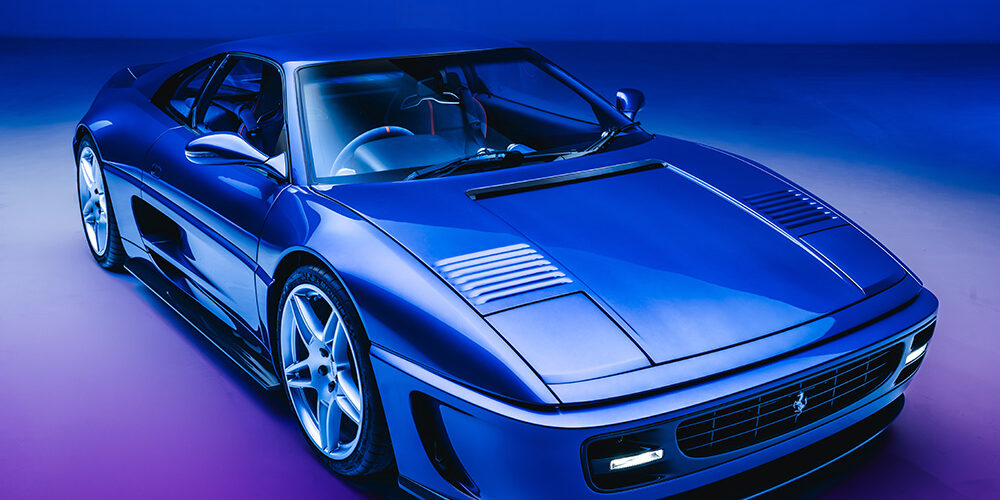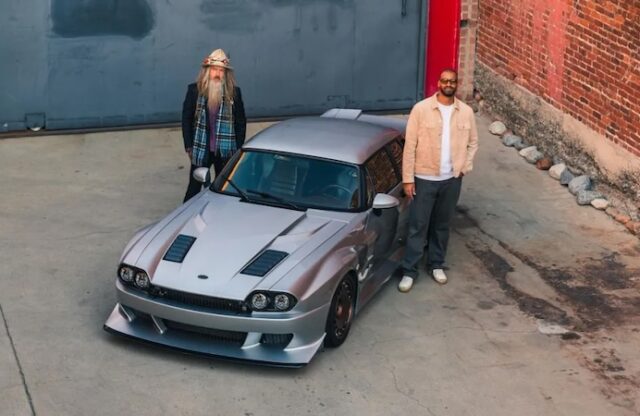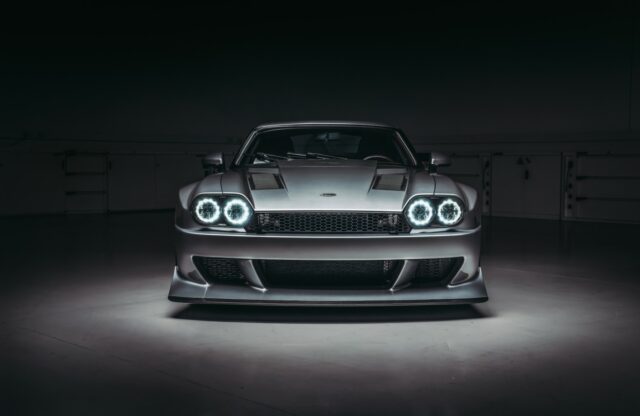The 355 by Evoluto might not be the first car to use a Maranello machine as its basis, but it is certainly one of the most controversial. Revealed on the eve of the Goodwood Festival of Speed 2024, its purpose is to “reimagine an iconic 1990s Italian supercar, combining advanced driving dynamics, state-of-the-art technology and class-redefining engineering”.
Only 55 Berlinettas are being produced, with the chassis treated to a carbon-fusing programme to increase torsional stiffness by 23 percent, while the naturally aspirated V8 now produces 420bhp courtesy of bespoke tuning and new engine management. However, most controversially, it has been given a new carbon body courtesy of CALLUM. The car has been designed for left- or right-hand drive, and F1-gearbox 355s can be turned into full manual-gearbox cars as part of the conversion. The car on display at the launch event, held just down the road from the Festival of Speed, was described as 80 percent production specification.

The response from the internet has been divided: the donor car is feted as the car that reinvigorated its maker in the mid-1990s, and in the eyes of many, the perfect symbiosis of then-modern tech and analogue performance, but also the ultimate evolution of the Fioravanti styling motif that had characterised mid-engined mainstream Ferraris since the 1970s.
While there were some positive responses, some on one large British internet forum bordered on the vitriolic. Despite all this, around half of the projected run have already found homes – and that was at 11am the day after launch, before a customer-facing event later that day.
As Magneto sat down with James Walker, the chief marketing officer of the DRVN Automotive Group behind the Evoluto brand – also known as YouTuber MrJWW – and Ian Muir, the CEO of the DRVN Automotive Group, the day after the big reveal, the response to the car didn’t appear to phase the team. For James, the decision to get involved came from a meeting of minds with DRVN’s owner Darren McDermott, with whom he’s been business partners for the past six years.
“We were both very fortunate to have lived an interesting automotive journey on the ownership side of things, and have been fortunate to work with most major brands,” he says. “We’ve both driven virtually every modern supercar, but we’ve also been exposed to classic cars, restomods and all sorts different car genres. We found a thread and age of car that ticked the most boxes for us.”
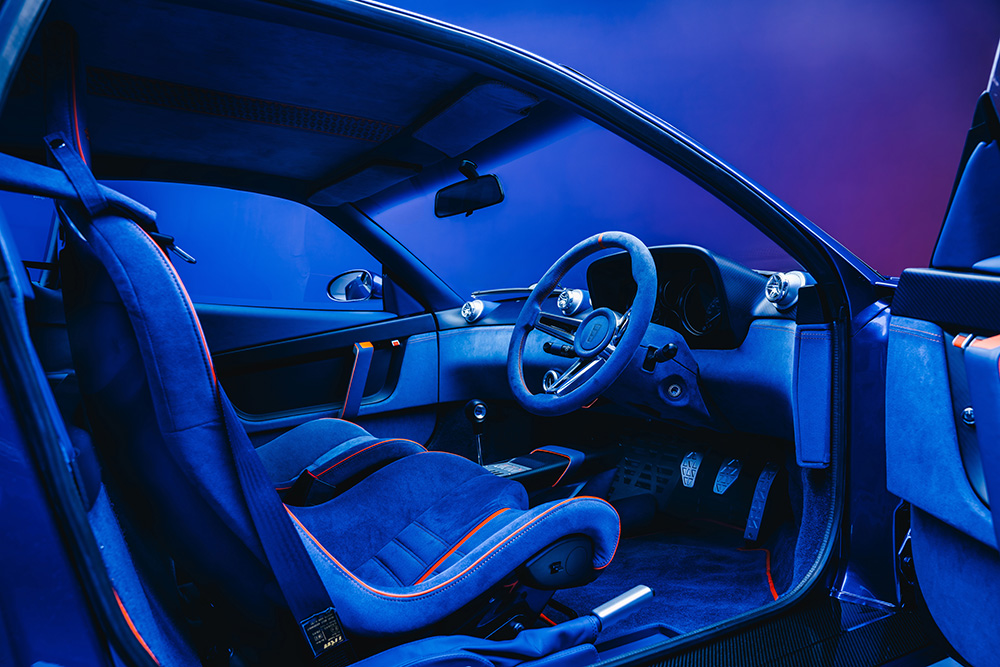
Those ticked boxes turned out to be a reaction against modern cars. “We’re going down the electrification route, and the rules and regulations applied to major OEMs means the cars are getting heavier, but also much faster,” James says. “However, we found the operating window of a supercar is far too high – on the road it’s hard to unlock the performance of a 1000bhp supercar. The attributes it was designed for mean you’re either going to prison or through a hedge, and if you take it on a track, it’s also too heavy. We found that a lot of these new supercars are in limbo, trying to be something to everyone.”
James also noticed a change in interest in his MrJWW YouTube channel. After starting to film a series called modern classics, the feedback was positive. “The response from the audience was overwhelming – there seemed to be a celebrated era through the 1980s, 1990s and 2000s, peaking with the Porsche 997 GT3 RS 3.8. That sort of ballpark seemed to resonate with petrolheads out there, and both Darren and I found that we’re resonating with these cars on a much deeper level than the latest supercars.”
Darren and James started to look at the ‘reimagined restoration world’, because they found that there was a lot to like about this era of cars. “The older you go, the more analogue it gets – the more a distilled a driving experience it became. It’s about less weight, less horsepower. It’s about what it makes you feel behind the wheel of a car,” James says.
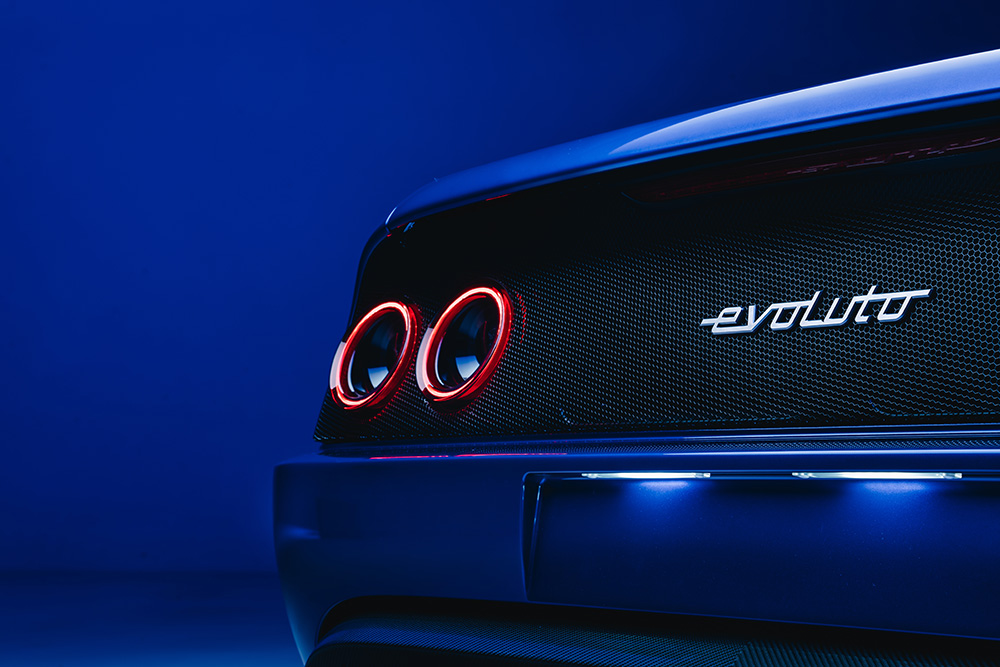
Darren and James acquired companies within the automotive sector that specialised in different elements of the car-production world. “We ultimately ended up with our own ecosystem in-house to allow us to design, develop, engineer and actually manufacture cars,” James explains.
DRVN was born, and thoughts soon turned to the Ferrari F355. “Both Darren and I had one, and we always stepped out of them with massive smiles, but we found it beautifully frustrating. There was so much right about the F355, but we could think of many improvements, and because we’d built up this incredible team of engineers, we were able to run these ideas by them.”
James is clear that it wasn’t about adding loads of horsepower. “What if we could improve throttle response, improve the servicing schedule and improve torsional stiffness without adding weight?” he explains. “That led us down the carbon-fusing route, and a 23 percent increase in torsional stiffness.”
As James says, there was little point improving the suspension and mounting it on a hard point that wasn’t that hard: “You can never fine-tune it to get the attribute you actually want, so from day one we had to go back to the absolute core of the chassis and get it right.
“Even though the car’s entire body is carbon, there’s almost three times as much carbon that you don’t see on the inside of the car. We gained a huge amount of torsional stiffness across the bulkhead and sills. Having stripped a few [of these cars] down we found that the original subframe was only coated on the outside, and rust from the inside out – you only find out when they crack.”
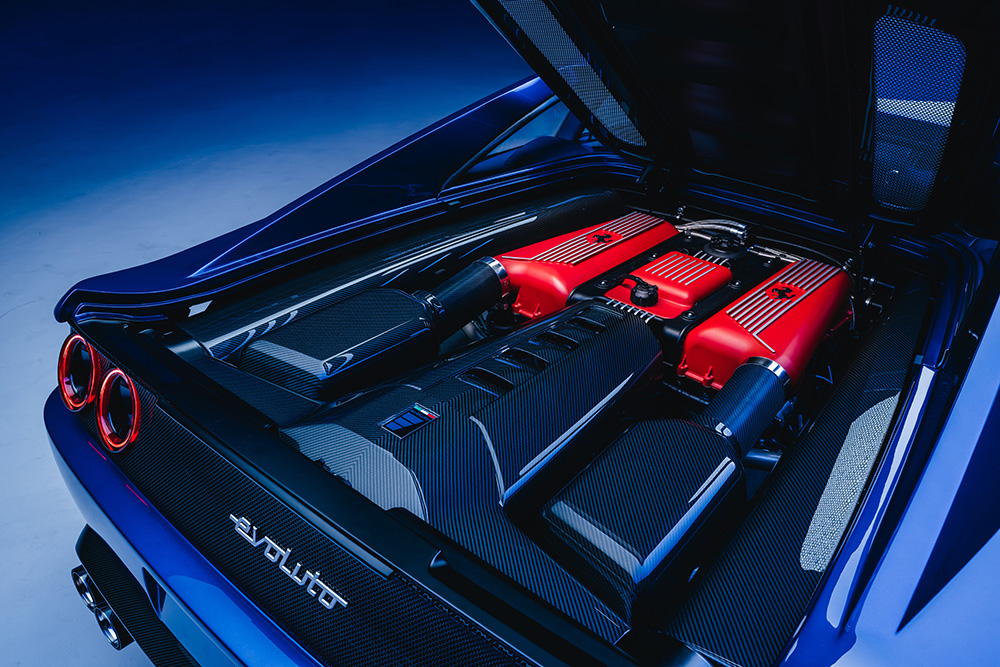
The process of stripping down several 355s has introduced the DRVN team to owners and specialists, who were forthcoming about the car’s shortcomings. “We spoke with owners and independent specialists, as well as a guy who’s proficient in setting them up as racing cars,” James says. “We’ve learned so much about what’s fantastic about these cars, and how to amplify that. We’ve also found out from owners about the points that could be improved.”
James draws my attention to the engine’s quill shaft, a key factor in making the V8 more compact than it might otherwise have been. “It’s a key component that transfers power from the engine to the drivetrain, and it turns out to be a weak point – so we developed a proprietary quill shaft,” he says. “On the engine side alone, there are more than 250 new parts.”
Getting to this point has taken three years – and the car you see before you is a production-specification model. “The first customer machines will be next year – it’s very much a real car,” James says.
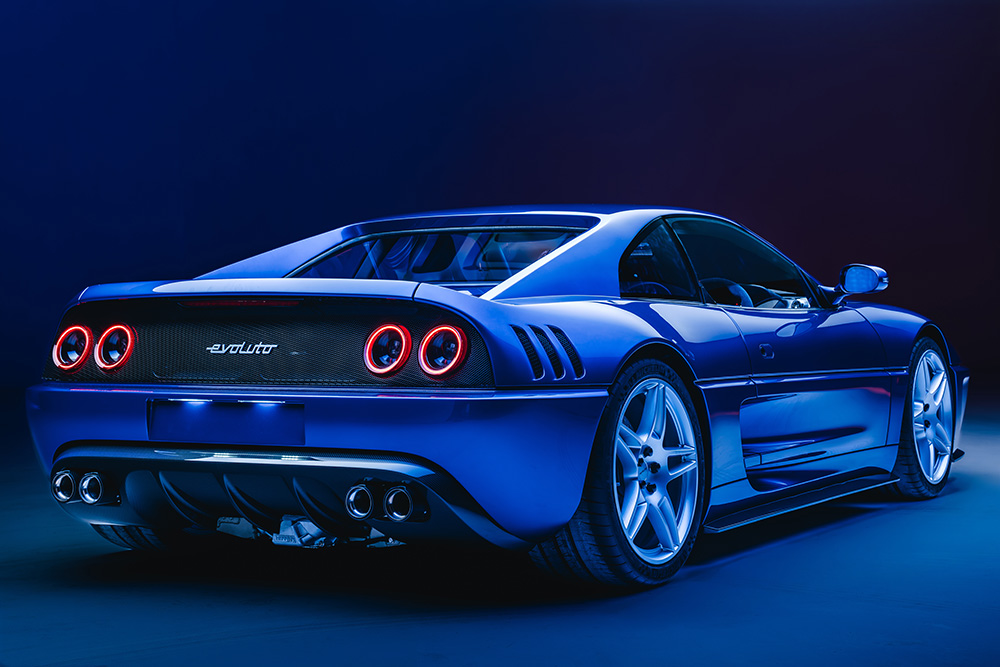
Of course, the most controversial part of the car isn’t the under-the-skin improvements; it’s the design elements that have drawn the most ire. Contrary to popular belief, they’re all functional. “It was a very form-followed-function design – we could have gone more extreme, but we’ve not developed the car for downforce, although the original flat floor has been enhanced, so there is improved stability at high speeds,” James explains.
“The majority of the styling was led predominantly by cooling. Every component from the cooling system has grown by 20 percent, so as soon you start sticking on 20 percent-larger radiators and cooling surfaces in places, everything externally has to adapt to that.”
Ian Callum of CALLUM was brought in to design the car, led by the engineering team. James points to the expanded door air intakes as determining other elements of the car. Due to the extra cooling need, it meant doing away with the original door pull due to a lack of space. “We went on a six-month development journey for a flush-depressing button that allows the door to pop out, on a car that never had an external door handle,” he chuckles.
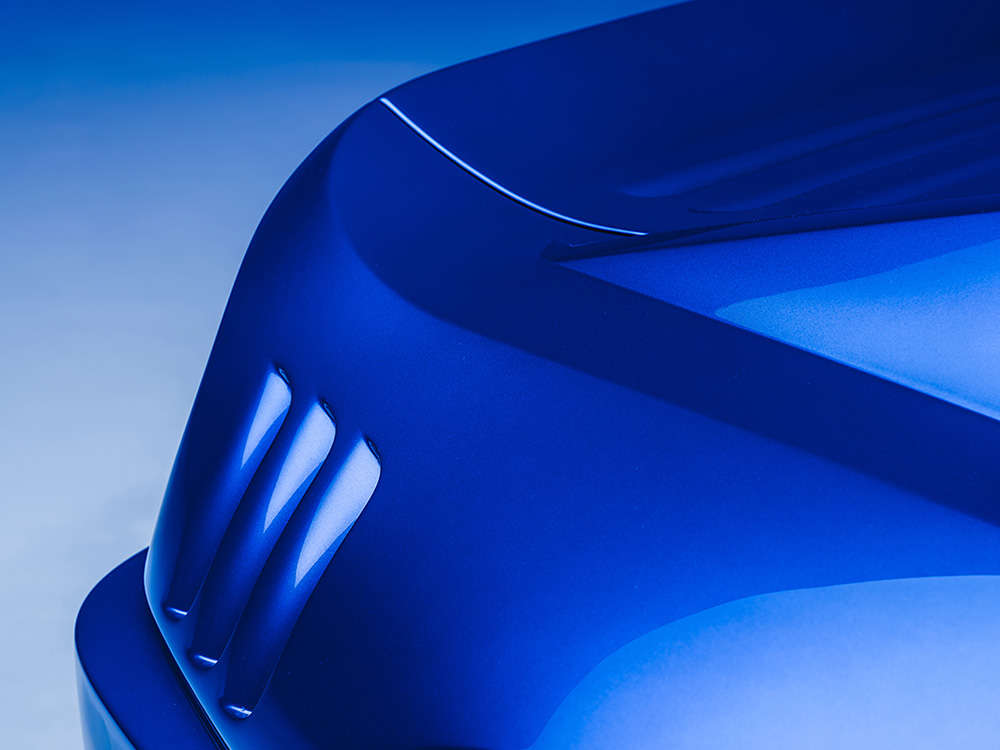
One major point of internet contention is the 288 GTO-aping rear-wing motif. Although James concedes that there is a graphical element at play, venting was necessary as a pressure bleed from the rear arch to keep the car stable at speed. “Horsepower gains from naturally aspirated engines are the most expensive you’ll try to achieve, and it’s often the most difficult from a cooling point of view,” he says.
The interior has also been fully revamped, something the team felt was entirely necessary given the donor car’s notorious ‘sticky plastics’ problem.
“The customer demographic in this bracket is well versed in what their expectation of a reimagined platform should have on the inside – other cars in this market have elevated the game to a totally different space,” James says. “However, we found the substrates didn’t lend themselves that well to what we were trying to achieve – we couldn’t do the project justice by just re-dressing what was there. We wanted improvements in terms of ergonomics and button placement. It’s got an entirely new electrical architecture.”
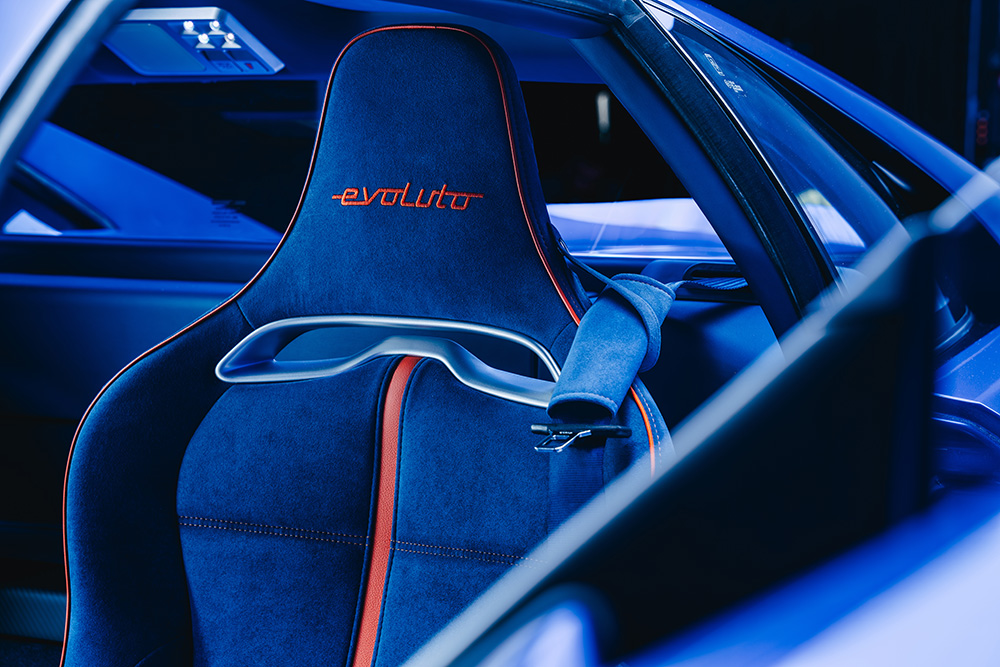
“We wanted to really elevate the interior so that it did justice to how beautiful the car is,” adds Ian Muir, DRVN’s CEO, explaining that the customer is free to choose leather, Alcantara or exposed carbonfibre for the trim. Despite these options, the car is much lighter than the original – the target weight is 1250kg. “Our goal for lightweighting meant we wanted to replace all the substrates with carbonfibre.”
As for suspension set-up, this is currently being finalised. “We are toying with two options,” says James. “Our inclination is to go for an adaptive set-up; however, we’re not chasing lap times, it’s about good times. We’re positioning this as something that is very enjoyable on the road – it doesn’t mean we’re going to slam the ride height. We want a functional ride height, with enough tyre sidewall that’s going to contribute to the overall ride quality.”
The six-speed manual gearbox has been reworked for greater tactility; Brembo GT six-piston slotted discs are fitted up front and four-piston calipers out back, augmented with uprated Brembo pads, lines and performance fluids. Carbon-ceramic discs are available as an option. No price had been released at the time of writing, although deliveries are due in 2025.
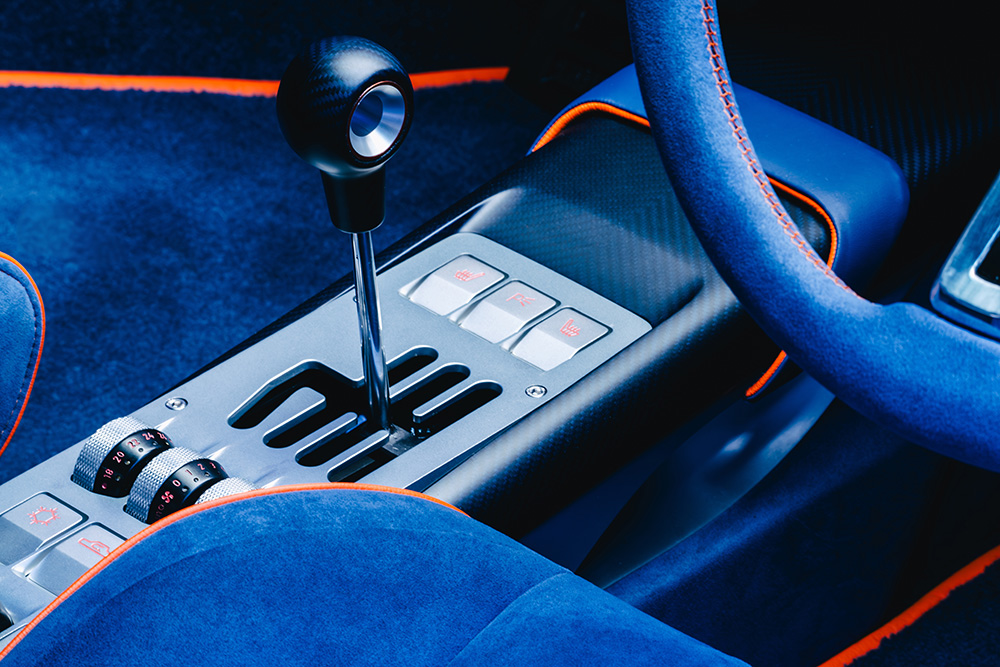
While the focus is on the 55 Evolutos, further variants haven’t been ruled out – particularly more track-focused set-ups. Evoluto is also emphatic in not offering parts of the conversion independently, as has been suggested online in response to the car.
“It’s been designed as such a holistic package, there isn’t one thing that would fit independently of another. The subframe is totally bespoke, we’ve got custom hard points on the chassis, and the cooling package doesn’t fit the original body – and it’s not going to work unless the exhaust package is there,” James explains.
It’s busy time for the DRVN group – the Boreham Motor Works programme is a very big deal – you can expect to hear a lot more very soon, which an NDA means Magneto can’t share more about for the moment.
“Chairman Darren McDermott gave us a clear brief to go out and build an infrastructure that could remaster some of the most iconic cars from the past, delivering peak analogue performance,” Ian says. “We wanted to go back to good old petrol engines and focus on mechanical engineering within the car, as opposed the electronic engineering.”
As part of this process, DRVN has built up an ecosystem of businesses across six different locations, with in excess of 250 engineers, designers and craftspeople.
“The group’s businesses have been delivering programmes for mainstream OEMs for years, who’ve outsourced a lot of their engineering,” Ian explains. “We found the best of them, brought them into the DRVN group and focused them on delivering our own vehicle programmes. We have developed ultra-low-volume vehicles for OEMs in the past, with our own paint shops, prototyping and homologation departments, autoclave and press forming – it’s turnkey all the way.”
For more information on Evoluto, head here.
